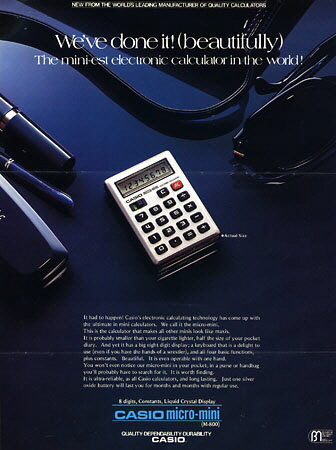Casio micro-mini
Casio Computer Co. Ltd. was very innovative in the development of calculators. The 'micro-mini' models were incredibly small when launched in the mid-1970s.
There are basically two models of the Casio micro-mini calculator; the M800, a basic 4-function version, and the M810, a version with % and memory functions too.
To
confuse matters, the M800 appears with several casing finishes and also with either a yellow-filtered LCD or clear-LCD.
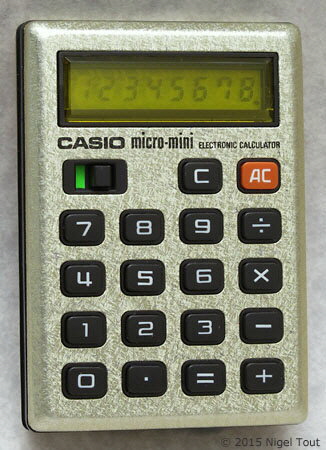
Mottled-golden finish Casio micro-mini M800 with yellow-filtered LCD.
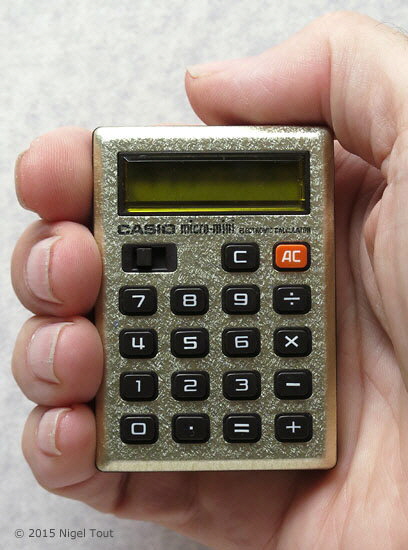
Casio micro-mini M800.
Distinctive features: Tiny "matchbox" size calculator.
Technical details:
Display is 8 digits, LCD, either yellow-filtered or clear.
4-function.
Battery: 1.2v (one button cell), with claimed running time of 60 hours[1].
Size: 43 x 62 x 14mm. (1.7" x 2.4" x 0.6").
Cost: November 1976 US$29.95[1] [about £16 GBP].
1976.
Made in Japan.
The Casio micro-mini M800 was available in several casing finishes and, probably a later version, with clear LCD instead of the yellow-filtered version (to cut out wavelengths of light harmful to the LCD).
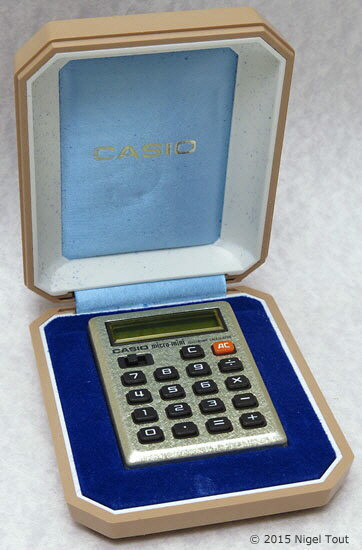
Casio micro-mini M800 in its presentation case.
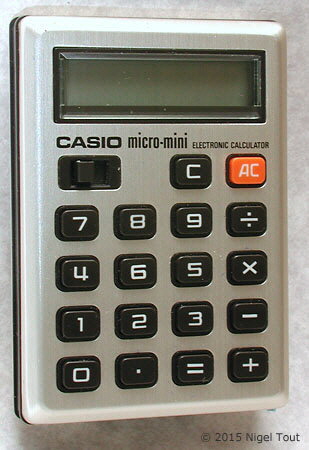
Clear-LCD version of the Casio micro-mini M800.
Colour brochure for the Casio micro-mini M800.
"The mini-est electronic calculator in the world."
Click on the image for a larger version.
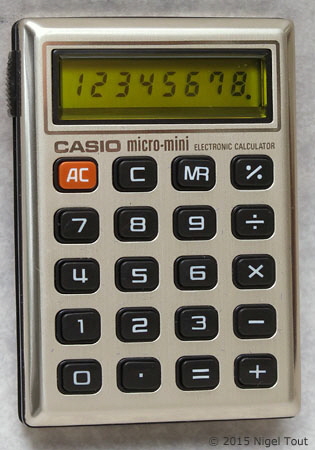
Casio micro-mini M810.
Distinctive features: Tiny "matchbox" size calculator.
Technical details:
Display is 8 digits, yellow-filtered LCD (to cut out wavelengths of light harmful to the LCD).
4-function, %, memory.
Battery: 1.2v (one button cell).
Size: 43 x 62 x 14mm. (1.7" x 2.4" x 0.6").
1976.
Made in Japan.
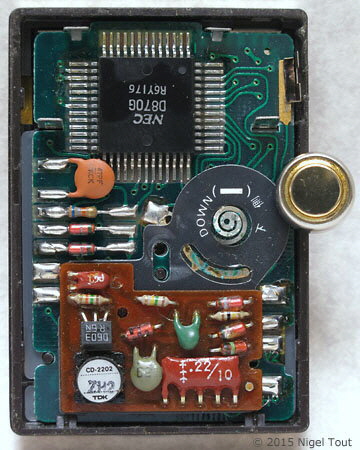
The circuit board inside the Casio micro-mini M810 together with a button cell of the type that it uses.
At the top is the NEC D870G calculator integrated circuit in a "Quad Flat Package".
The black circle on the right is insulation where the button cell sits, and the small circuit board is likely to be an oscillator to provide a higher voltage than the 1.2v from the button cell.
Significance:
Using a low-power LCD display allowed the calculator to be powered by a single button cell. The single chip is in a "Quad Flat Package" which has a small footprint and
allows the use of the tiny case.
The introduction of "Matchbox" size calculators was, however, a dead end in calculator development. They are tiny, and easy to misplace, but still a bit on the thick. The direction in which calculator development took off around this time was with the "Credit card" size calculator, such as the Casio Mini Card LC-78. These, being thin but having an easily manageable form-factor, became very popular in a large variety of models.
Reference:
Hand-held Calculators
Vintage Calculators
Text & photographs copyright, except where stated otherwise, © Nigel Tout 2000-2026.
